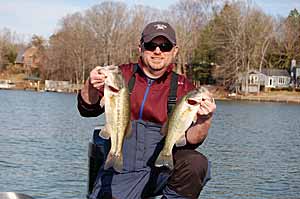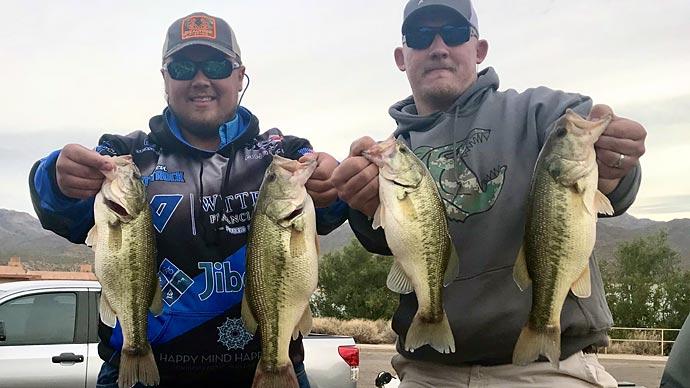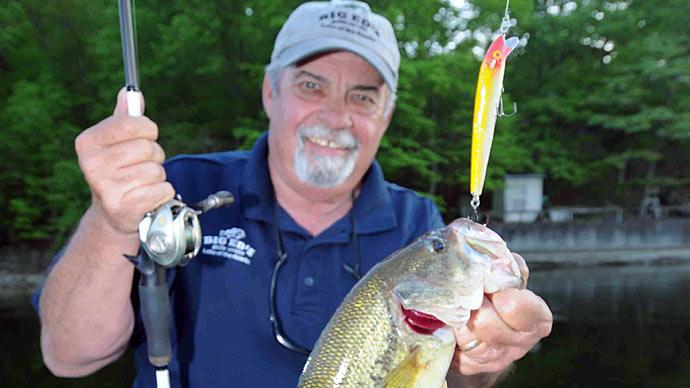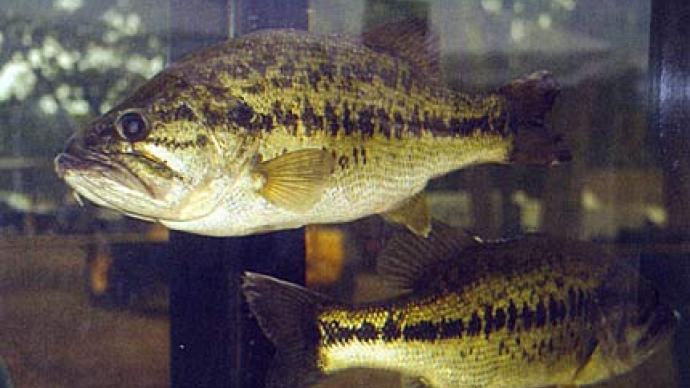
You feel something tug on your line, and without thinking, you pull back. Suddenly, your rod bends and dances to life. Fish on!
This is not your first rodeo, so in a few seconds you have worked the fish to hand and you're lifting it gingerly from the water. Aha... It's a largemouth, and a dandy at that -- 12 inches long, the color of old money and not the least bit happy with its predicament.
Feeling rather full of yourself at the moment, you lower the bass back into the pond. With an indignant flick of the tail, the fish disappears and you cackle in the tone reserved for the cocky.
But wait...Did you really do the right thing? Should that fish have been released? Maybe so, Maybe not.
Most of the nation's leading fisheries consultants say that a pond can sustain production indefinitely if anglers remove about 10-20 pounds of bass per surface acre per year. But automatic catch-and-release is not the yellow brick road to pond bliss. In fact, many ponds have too many bass.
Indeed, members of the POND BOSS Field Advisory Staff point out that improper harvest can lead to numerous problems with both prey and predator populations. Advisors put it this way: The typical well-managed pond may support 50-100 pound of predators - bass, trout, hybrid stripers - per surface acre. That's fewer fish than many pond owners realize.
If the numbers get too much higher, predators tend to overrun their food supply and eat themselves into malnutrition. Dave Ouawinga of Stoney Creek in Michigan sees the same thing with trout in ponds in the upper Midwest. This balance in prey-predator relationships almost certainly explains why it's uncommon for a pond to produce a double-digit bass without at least some harvest.
"It's like pulling weeds from a garden," said Shan O'Gorman, a consulting biologist with Professional Ponds who works private impoundments in Georgia and South Carolina. "If you don't catch a few fish out, they spawn and wind up stacking fish on top of fish."
"Strict catch-and-release is fine for certain ponds, but for others, it's not the best thing."
In a new pond, most pond professionals advise not removing a single bass until the first-year starter fish have had time to spawn. In the second year, only then should the pond owner consider taking out bass - and then only 10-20 pounds per acre per year, more as the pond matures.
So how does the pond owner know what fish need to be removed? And in what quantity?
Answer: The fish will let you know. Actually, their body weight and general physical condition usually tell the tale.
Standard body weights set by years of field research conducted by members of the American Fisheries Society (see chart) give you a good read on how much forage the fish has available. A 12-inch fish, according to the AFS, should weigh 14 ounces.
Check the weights of a few of your bass. Actual weights vary according to elevation, lenth of growing season and water quality, but if your 12-inchers weight less than say, 12 or 13 ounces, it's time to boost their food rations.
O'Gorman has seen 12-inch bass that weigh 8 ounce, some 40 percent underweight.
One tactic for increasing the availability of food is to stock a new forage species. If your pond has a healthy population of bluegill, consider adding redear sunfish or crayfish. But the most direct way to increase the amount of food is to reduce the competition.
This means keeping a select number of the bass you catch, usually the sub-adult bass in the 10-14 inch class. O'Gorman, for one, always seems to have a freezer full of fish fillets, courtesy of his clients who don't want to take the time and effort to clean fish.
Over the past 5-10 years, field Advisor Malcolm Johnson of Johnson Lake Management in San Marcos, TX has noticed that pond owners are becoming increasingly more reluctant to allow their guests to remove bass, perhaps because they know how valuable the fish are.
"People know they should remove a few small fish, especially if the goal is big bass," O'Gorman said. "But they don't want to take time to fillet the fish and they don't want to take every 14-inch bass they catch and throw them on the bank."
When O'Gorman is electro-shocking a lake and sees it overstocked with bass, he will begin the new harvest program by removing the undersized largemouth he collects during the survey.
"I try to preach common sense," O'Gorman said. "If a pond has a ton of fish between 10 inches and 16 inches, I will tell the landowner to start keeping fish in that size range until those fish start weighing what they should."
POND BOSS Field Advisors urge pond owners to remove fish on a gradual schedule, rather than all at once. This helps the bass maintain balance among the fish species by controlling the forage species selected by the predators in the target size-range.
"A lot of people know they are supposed to take a few fish, they just don't get around to doing it," O'Gorman said. "With some, fishing may be the focus of the pond, but it's not the only activity. They may like to see deer walk up and take a drink. They may like having a pretty trail for riding their horses."
| Standard weights for healthy bass | ||||||||||||||||||||||
Do the largemouth in your pond measure up? Here are the standard body weights for bass, as posted by the American Fisheries Society. The weights are intended to serve as optimum goals. In practice, standard weights may vary by region, according to length of growing season, elevation, water quality and other limiting factors.
|
Source: American Fisheries Society
Reprinted with permission from Pond Boss Magazine



